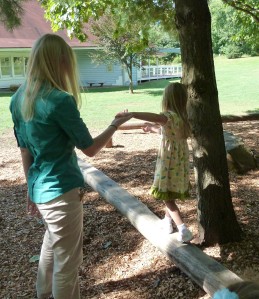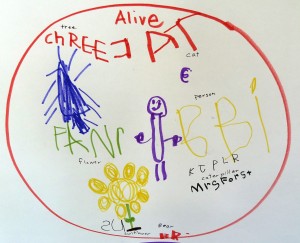Once upon a time, not so long ago, a little group of curious newly-legged frogs spent every waking minute experimenting with their world. All of the peepers explored and practiced every possible area of learning. Most, however, found that the winds directing their studies sent them in a variety of directions. A few practiced jumping until their legs could jump no more. They leapt high and far, increasing their distance with each bound. Some ambitious amphibians tried their hand, or rather foot, at creating symbols to represent the stories frequently shared within the family. Pictures and word symbols were attempted, adjusted, abandoned, and accepted. One lily pad hosted frogs intent only on perfecting their melodious, throaty tunes. Many of the frogs often attended and excelled at reptilian etiquette class where they learned the finer points of when to croak and when to listen, how to politely solve problems encountered in leap-frog, and how to build positive relationships among the froggy clan. Each frog found and explored their passion.
Yet all was not perfect in the land of frog. For the leapers were not necessarily good croakers. The symbologists occasionally missed their aimed for lily pad. The successfully social often found symbols and storytelling completely non-compelling.
The adult frogs wanted to know when their athletic little polliwog would finally begin to see the point of symbols. When would the socially awkward frog, though an amazing hopper, figure out that croaking in his neighbor’s ears was unmannerly. Why was the worst singing frog in the history of frogsong allowed to remain in the pond anyway? (Though the parents did acknowledge the tuneless little frog was an amazing diver and adept at bug snatching.)
“Wait,” said the teachers.
“Patience,” said the wind.
“Faith,” said the lily pads.
As the months went by, the polliwogs often began to drift toward new endeavors. Some who had spent all their spare moments leaping began singing at every opportunity. Others who had found symbology a chore, now sought out the craft as the most obvious way to record their newfound love of reptilian history. Though it is true that some of the polliwogs held on to their original strengths as they matured, none of them stopped at one discipline for learning. All of them gained a bit from each experience and in the end, all became committed to the pond and it’s community, contributing in the manner of their genius.





